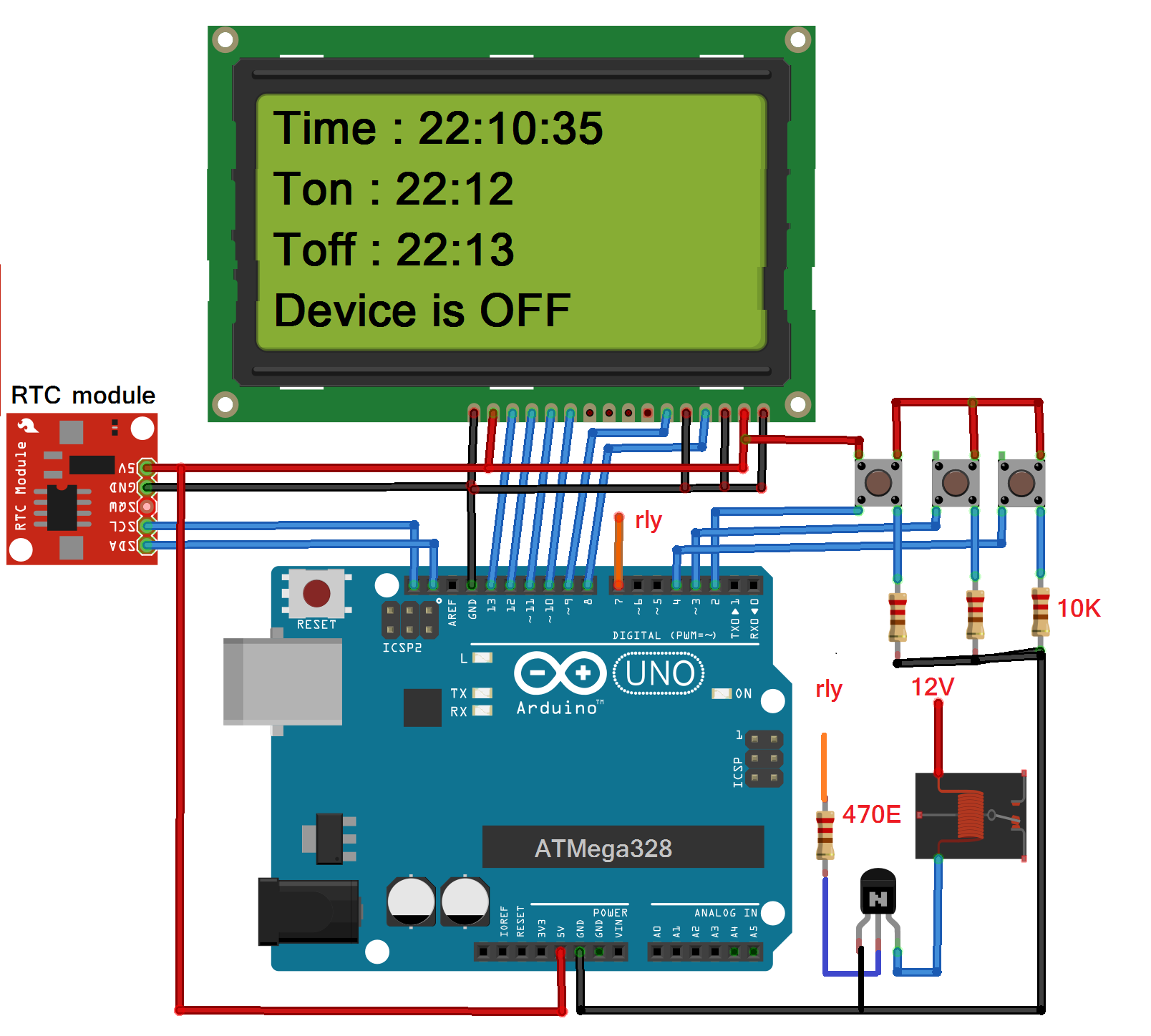
The sketch starts by including libraries (if required) and defining global variables and objects. We can visualize an Arduino sketch with a simple flowchart, something like this:

Let’s look at how all of this fits into your Arduino sketch. When an interrupt event occurs, the microcontroller runs some code that you have placed in an “Interrupt Service Routine” or ISR function. We will discuss these in detail in a bit, but for now, let’s just say that they all work in basically the same way.
#Using arduino as timer how to
Today, we will see how to use interrupts with an Arduino Uno. Using interrupts will make you a better coder, and they are not that hard to use once you get familiar with them.
#Using arduino as timer software
Software Interrupts – These are internal signals, usually controlled by timers or by software-related events.Hardware Interrupts – These usually come from external signals.They can all be divided broadly into two categories:

There are many types of interrupts used with microcontrollers and microprocessors, the interrupt features vary from model to model. They are also the proper choice when you need to measure input pulses accurately. Interrupts are great for monitoring events such as switch presses or alarm triggers, which occur spasmodically. When the interrupt code has finished, the program resumes where it left off.The code related to the interrupt is run.The program is paused, and its data is put aside so that it can resume later.In its basic form, an interrupt works like this: When you type on a keyboard, move a mouse, or swipe on a touchscreen, you are creating interrupts, and these interrupts get services working that create the appropriate response to your actions. Interrupts are by no means unique to microcontrollers, they have been used in computers and controllers for decades. Interrupts are pretty well what the name implies, a method of interrupting the execution of a program in order to take care of something else. One way of keeping control of external inputs, or internal timing events, is to use interrupts. And busy microcontrollers need a way of managing external events, like pushbutton presses, while juggling other inputs and outputs timing processes. Microcontrollers can provide precision timing pulses.īecause they can handle multiple inputs, and because they can do many things, microcontrollers can get quite busy.Microcontrollers can handle multiple inputs and outputs.There are a lot of good reasons for doing that, among them:

When we design a project, we usually base it upon a microcontroller.


 0 kommentar(er)
0 kommentar(er)
